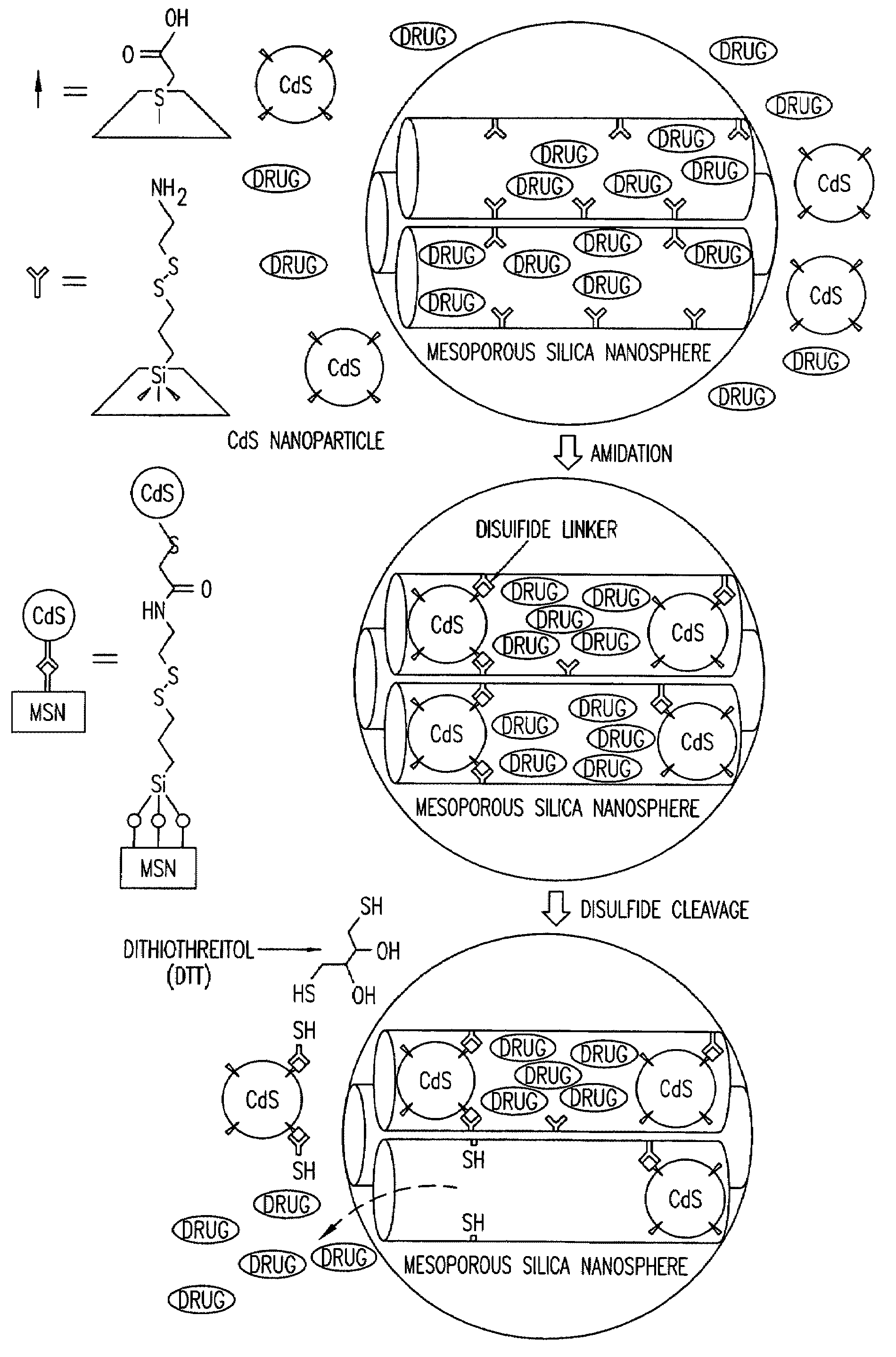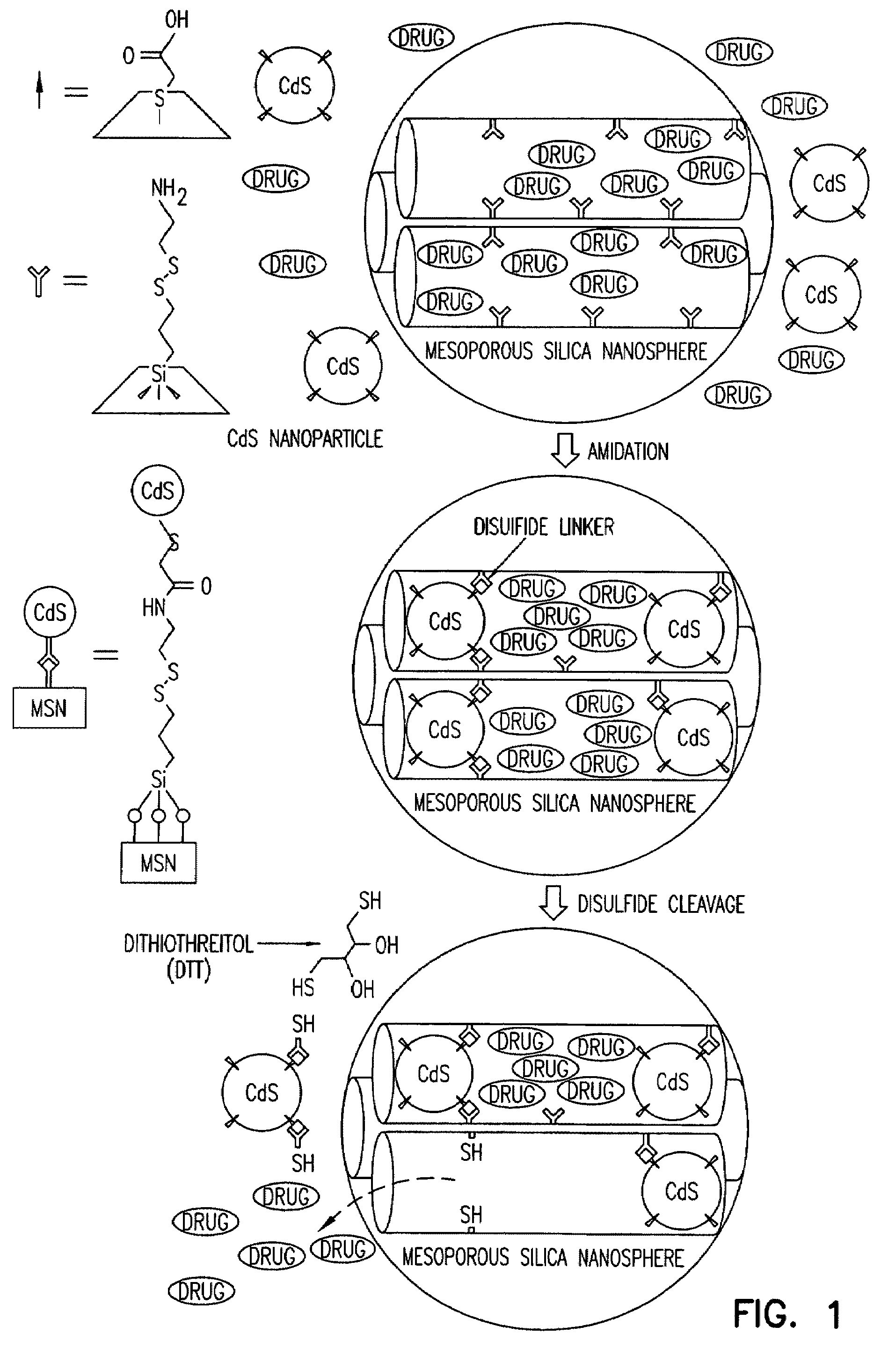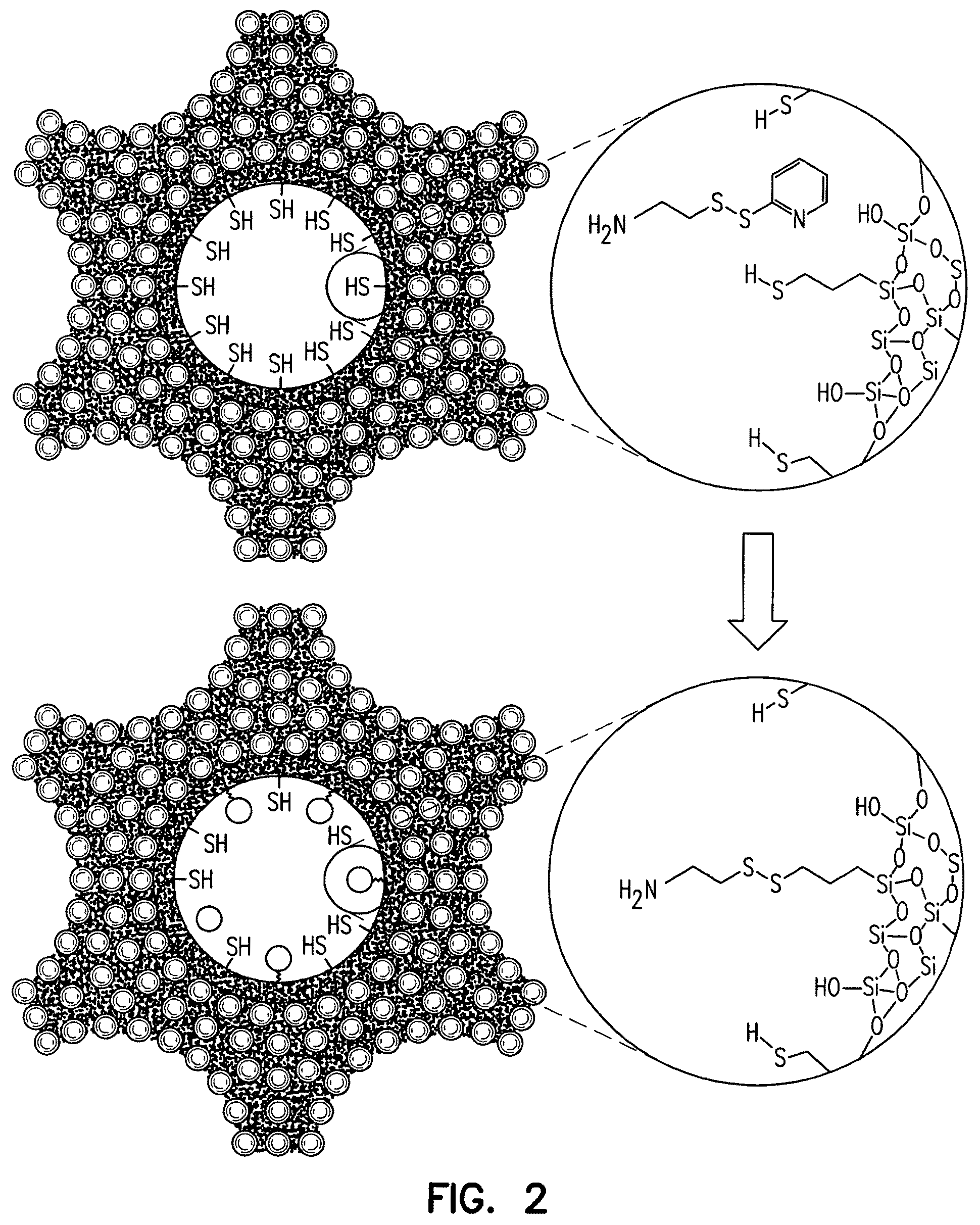Capped mesoporous silicates
a technology of mesoporous silicate and capped silicate, which is applied in the field of capped mesoporous silicate, can solve the problems of unusable modifications of the structure or function of encapsulated molecules
- Summary
- Abstract
- Description
- Claims
- Application Information
AI Technical Summary
Benefits of technology
Problems solved by technology
Method used
Image
Examples
example 1
Drug-Loaded Mesoporous Silica Particles Capped With CdS
a. Loading of Vancomycin and ATP into a Mesoporous Framework of Linker-MSN and Capping the Mesopores with Mercaptoacetic Acid-Functionalized CdS Nanoparticles.
[0069]Purified linker-MSN material from sub-part (b) below (100.00 mg) was incubated in a PBS buffer solution (0.60 mL, pH 7.4) of ATP or vancomycin (3.00 μmol in both cases) for 24 hours. Mercaptoacetic acid-functionalized CdS nanoparticles from sub-part (c) below (0.15 mmol) were dissolved in 2.00 mL of PBS buffer with vancomycin or ATP (0.01 mmol in both cases); 1-[3-(dimethylamino)propyl]-3-ethylcarbodiimide hydrochloride (EDC) (57.50 mg, 0.30 mmol) was added to the CdS / drug solution. The reaction mixture was allowed to stir for 24 hours, followed by centrifuging the suspension at 12 000 rpm for 3 minutes. The resulting precipitates (ATP- or vancomycin-loaded, CdS-capped MSNs) were isolated and dried under vacuum.
[0070]b. Synthesis of MCM-41-Type Mesoporous Silica Nano...
example 2
DTT-Induced Drug / Neurotransmitter Release Study
[0078]CdS-capped MSN with vancomycin or ATP (10.00 mg) material was dispersed in 1.50 mL of PBS buffer (pH 7.4), followed by repeating wash / sonication / centrifugation cycles for five times to remove physisorbed, uncapped vancomycin or ATP molecules on the exterior surface of the material. The purified MSN / drug composite was redispersed in 3.50 mL of PBS buffer (pH 7.4). Aliquots were taken every 4 hours over a time period of 12 hours from the MSN / water suspension and injected to an analytical HPLC system (Hitachi LC / 3DQMS with a reverse phase C18 column (Vydac), 0.4 cm×25 cm) to monitor the leaching of the mesoporous channel encapsulated vancomycin or ATP molecules. After 12 hours, dithiothreitol (DTT, 18.50 mM) was added to the suspension to cleave the disulfide linkage between the CdS nanoparticle and the MSN. The kinetic profiles of the DTT-induced release of vancomycin and ATP were monitored by following two literature-reported HPLC ...
example 3
Controlled-Release Studies of CdS-Capped, ATP-Encapsulated MSN with Neuroglia Cells (Astrocytes) in Vitro
a. Methods.
(i) Wistar rats, raised at Iowa State University, were used for these experiments. Animal care and experimental protocols were in accordance with the guidelines and approval of the Iowa State University Committee on Animal Care.
[0080](ii) Cell Cultures. Enriched primary astrocyte cultures from neonatal (P0 to P3) rat cerebral cortex were prepared as previously described by Jeremic, A., et al., J. Neurochem. 2001, 77, 664-675. Briefly, freshly dissected cortical tissues from three animals were incubated 50 minutes at 37° C. in 2.00 mL of Earle's balanced salt solution (EBSS; Gibco-Invitrogen Co.) containing papain (1.54 mg / mL; Sigma-Aldrich Co.). After incubation, tissue was rinsed with EBSS solution and incubated for 5 minutes in trypsin-inhibitor solution (1 mg / mL; Gibco-Invitrogen Co.). After being rinsed, once with EBSS solution and once with culture medium (consist...
PUM
| Property | Measurement | Unit |
|---|---|---|
| particle size | aaaaa | aaaaa |
| diameter | aaaaa | aaaaa |
| size | aaaaa | aaaaa |
Abstract
Description
Claims
Application Information
 Login to View More
Login to View More - R&D
- Intellectual Property
- Life Sciences
- Materials
- Tech Scout
- Unparalleled Data Quality
- Higher Quality Content
- 60% Fewer Hallucinations
Browse by: Latest US Patents, China's latest patents, Technical Efficacy Thesaurus, Application Domain, Technology Topic, Popular Technical Reports.
© 2025 PatSnap. All rights reserved.Legal|Privacy policy|Modern Slavery Act Transparency Statement|Sitemap|About US| Contact US: help@patsnap.com



